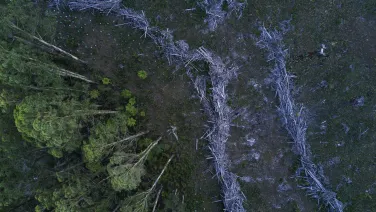
Free as a bird: how forensic genomics is helping to stop wildlife trafficking
DNA databases are often used by police to place criminals at the scene of a crime, but Dr George Olah has something else in his sights: parrots.
“In this case, we’re not catching the parrot as a criminal,” he hastens to add. “The parrot is the victim.”
Parrots are, by number, among the most trafficked bird in the illegal wildlife trade, motivating Dr Olah, from the Fenner School of Environment and Society at ANU, to develop a project which has been called “CSI, but for parrots”.
Bringing together criminology and conservation, Dr Olah is creating a forensic genomic toolkit which will help authorities to track illegal trade routes.
As its first test-case, the project is starting in Indonesia, which has been identified as the highest priority country for parrot conservation.
“If you want to focus on research which makes an impact, this is it,” says Dr Olah.
The toolkit will consist of cutting-edge, but low-cost, sequencing technology which can be used in the field. Samples will be collected from threatened species, via a feather or a drop of blood taken from a chick, and then fed into a genetic database which authorities can consult when investigating parrots they believe have been taken illegally from the wild.
“It will be like the human database, CODIS, which the FBI manages,” Dr Olah says.
“For traded wildlife, we don’t yet have a DNA database like the one Interpol is using, for instance, to identify missing persons through international police cooperation. Once we have it, we can do network analysis, showing which birds are coming from which islands.
“We hope that after a few years, we would have a map which shows the main trade routes so law authorities can focus on those islands and work with communities there to see who is behind the poaching, and why.
“The database will tell us about the whole dynamics of the trade, and help authorities to make a global case.”

The toolkit will also facilitate the reintroduction of confiscated parrots, helping depleted wild populations to recover.
“Currently, there might be a confiscation of parrots in Java, but no-one knows where in the wild they were taken from, so they end up in rescue centres. I visited a few of these centres and often they’re really crowded.
“But if we can prove to the authorities that the birds come from a particular island, then after health screening and disease testing, we can facilitate them being moved back to this origin.”
As well as being a threat to biodiversity, wildlife trafficking is increasingly a global public health issue because of its role in spreading zoonotic diseases. This is a “huge issue” for the region, Dr Olah says.
“So if we know more about the illegal wildlife market, we can safeguard not only the animal species but humans too.”

Dr Olah, who has worked on several nature documentaries including BBC’s Seven Worlds, One Planet, hopes the project will increase awareness about the reality of the wildlife trade.
“There’s not much information out there about the parrot trade and lots of people assume that it’s all legal. I hope to make a film which can show what’s actually going on under the table, which is that often parrots bought as legal birds are coming from the wild.
“We can show the suffering associated with the trade, which is really horrible for the animals, and also a direct link to how the poaching is negatively influencing the wild population.”
Dr Olah says that people are naturally attracted to the beauty and intelligence of parrots, and feel a strong connection to them as pets, but having observed them closely in the wild, he believes this is where birds belong.
“I was working with macaws in the Amazon, and when you are on top of these huge tree canopies and you see the immense, endless rainforest from, literally, the birds-eye perspective, it’s just such freedom.
“They belong to that wide open space.”



